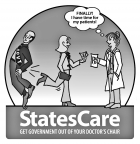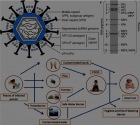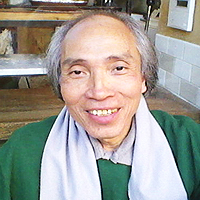Abstract
Case Report
Case report: Perioperative management of a patient with familial dysautonomia
Melodie Sarebanha, Laura Valente, Minnea Kalra, A Joseph Layon and Ettore Crimi*
Published: 08 September, 2021 | Volume 6 - Issue 1 | Pages: 029-032
Familial dysautonomia is a rare autosomal recessive neurodegenerative disease affecting cells of the autonomic nervous system. Patients with this disease are insensitive to pain but their autonomic nervous system is still activated with noxious stimuli. This report details a case of a patient with familial dysautonomia who underwent right ankle open reduction and internal fixation for a bimalleolar right ankle fracture. The patients preoperative and intraoperative course were uneventful but shortly after handoff to the intensive care unit, the patient experienced an autonomic crisis. Management of these patients is complex, requiring maintenance of physiologic homeostasis as well as preventing hemodynamic instability caused by noxious stimuli. Any deviations from baseline may cause an autonomic crisis, as happened in our patient. Herein, we detail the perioperative management of a patient with familial dysautonomia in further detail.
Read Full Article HTML DOI: 10.29328/journal.jcicm.1001038 Cite this Article Read Full Article PDF
Keywords:
IKAP: IκB Kinase complex–Associated Protein; ELP1: Elongator Complex Protein 1; ICU: Intensive Care Unit
References
- Shohat M, Weisz Hubshman M. Familial Dysautonomia. In: Adam MP, Ardinger HH, Pagon RA, et al., eds. GeneReviews. Seattle (WA): University of Washington, Seattle; 2003.
- Rubin BY, Anderson SL. IKBKAP/ELP1 gene mutations: mechanisms of familial dysautonomia and gene-targeting therapies. Appl Clin Genet. 2017; 10: 95-103. PubMed: https://pubmed.ncbi.nlm.nih.gov/29290691/
- Ngai J, Kreynin I, Kim JT, Axelrod FB. Anesthesia management of familial dysautonomia. Paediatr Anaesth. 2006; 16: 611-620. PubMed: https://pubmed.ncbi.nlm.nih.gov/16719876/
- Palma JA, Norcliffe-Kaufmann L, Fuente-Mora C, Percival L, Mendoza-Santiesteban C, et al. Current treatments in familial dysautonomia. Expert Opin Pharmacother. 2014; 15: 2653-2671. PubMed: https://www.ncbi.nlm.nih.gov/pmc/articles/PMC4236240/
- Dillon RC, Palma JA, Spalink CL, Altshuler D, Norcliffe-Kaufmann L, et al. Dexmedetomidine for refractory adrenergic crisis in familial dysautonomia. Clin Auton Res. 2017; 27: 7-15. PubMed: https://pubmed.ncbi.nlm.nih.gov/27752785/
- Marthol H, Tutaj M, Brys M, Brown CM, Hecht MJ, et al. Clonidine improves postprandial baroreflex control in familial dysautonomia. Eur J Clin Invest. 2003; 33: 912-918. PubMed: https://pubmed.ncbi.nlm.nih.gov/14511364/
- Anderson SL, Coli R, Daly IW, Kichula EA, Rork MJ, et al. Familial dysautonomia is caused by mutations of the IKAP gene. Am J Hum Genet. 2001; 68: 753-758. PubMed: PubMed: https://pubmed.ncbi.nlm.nih.gov/11179021/
- Bissonnette B. Hereditary Sensory and Autonomic Neuropathies (HSAN): Overview. In: Bissonnette B, Luginbuehl I, Marciniak B, Dalens BJ. eds. Syndromes: Rapid Recognition and Perioperative Implications. McGraw-Hill. 2021.
- Kazachkov M, Palma JA, Norcliffe-Kaufmann L, Bar-Aluma BE, Spalink CL, et al. Respiratory care in familial dysautonomia: Systematic review and expert consensus recommendations. Respir Med. 2018; 141: 37-46. PubMed: https://pubmed.ncbi.nlm.nih.gov/30053970/
- Pearson J, Gallo G, Gluck M, Axelrod F. Renal disease in familial dysautonomia. Kidney Int.
1980; 17: 102–112. PubMed: https://pubmed.ncbi.nlm.nih.gov/7374014/ - Axelrod FB. Familial dysautonomia: a review of the current pharmacological treatments. Expert opinion on pharmaco- therapy. Ashley Publications. 2005; 6: 561–567. PubMed: https://pubmed.ncbi.nlm.nih.gov/15934882/
- Abulhasan Y, Buu N, Frigon C. Perioperative use of dexmedetomidine in an infant with
familial dysautonomia. Br J Anaesth. 2009; 103: 413-415. PubMed: https://pubmed.ncbi.nlm.nih.gov/19592408/ - Mustafa HI, Fessel JP, Barwise J, Shannon JR, Raj SR, et al. Dysautonomia: Perioperative Implications. Anesthesiology. 2012; 116: 205–215. PubMed: https://pubmed.ncbi.nlm.nih.gov/22143168/
Similar Articles
Recently Viewed
-
Non-variant phenomena in heterogeneous systems. New type of solubility diagrams pointsNikolay A Charykov, Konstantin N Semenov, Victor A Keskinov*, Alexey V Rumyantsev, Natalia A Kulenova, Marina V Charykova, Dmitriy I Subbotin. Non-variant phenomena in heterogeneous systems. New type of solubility diagrams points. Ann Adv Chem. 2023: doi: 10.29328/journal.aac.1001047; 7: 074-097
-
Empirical formulae for calculating γ-ray detectors effective solid angle ratioMohamed. S. Badawi*,Ahmed M El Khatib,Mohamed A Elzaher,Mona M Gouda,Abouzeid A Thabet,Mahmoud I Abbas,Kholud S Almugren. Empirical formulae for calculating γ-ray detectors effective solid angle ratio. J Radiol Oncol. 2017: doi: 10.29328/journal.jro.1001002; 1: 012-021
-
Evolving Paradigms in Strep Throat: From Epidemiology to Advanced Therapeutics - A Comprehensive OverviewSai YRKM*. Evolving Paradigms in Strep Throat: From Epidemiology to Advanced Therapeutics - A Comprehensive Overview. Heighpubs Otolaryngol Rhinol. 2022: doi: 10.29328/journal.hor.1001025; 6: 001-010
-
A comparative study of single or dual treatment of theranostic 188Re-Liposome on microRNA expressive profiles of orthotopic human head and neck tumor modelShan-Ying Wang,Liang-Ting Lin,Bing-Ze Lin,Chih-Hsien Chang,Chun-Yuan Chang,Min-Ying Lin,Yi-Jang Lee*. A comparative study of single or dual treatment of theranostic 188Re-Liposome on microRNA expressive profiles of orthotopic human head and neck tumor model. Heighpubs Otolaryngol Rhinol. 2021: doi: 10.29328/journal.hor.1001024; 5: 001-012
-
Computational Simulation of Phase-Molecular Separation-DNA/RNA-Related Function Based on Gene Ontology using Combination of Computational Fluid Dynamics, Machine Learning and Membrane SystemsAlireza Heidari*. Computational Simulation of Phase-Molecular Separation-DNA/RNA-Related Function Based on Gene Ontology using Combination of Computational Fluid Dynamics, Machine Learning and Membrane Systems. Ann Adv Chem. 2025: doi: 10.29328/journal.aac.1001055; 9: 009-018
Most Viewed
-
Sinonasal Myxoma Extending into the Orbit in a 4-Year Old: A Case PresentationJulian A Purrinos*, Ramzi Younis. Sinonasal Myxoma Extending into the Orbit in a 4-Year Old: A Case Presentation. Arch Case Rep. 2024 doi: 10.29328/journal.acr.1001099; 8: 075-077
-
Evaluation of Biostimulants Based on Recovered Protein Hydrolysates from Animal By-products as Plant Growth EnhancersH Pérez-Aguilar*, M Lacruz-Asaro, F Arán-Ais. Evaluation of Biostimulants Based on Recovered Protein Hydrolysates from Animal By-products as Plant Growth Enhancers. J Plant Sci Phytopathol. 2023 doi: 10.29328/journal.jpsp.1001104; 7: 042-047
-
Feasibility study of magnetic sensing for detecting single-neuron action potentialsDenis Tonini,Kai Wu,Renata Saha,Jian-Ping Wang*. Feasibility study of magnetic sensing for detecting single-neuron action potentials. Ann Biomed Sci Eng. 2022 doi: 10.29328/journal.abse.1001018; 6: 019-029
-
Physical activity can change the physiological and psychological circumstances during COVID-19 pandemic: A narrative reviewKhashayar Maroufi*. Physical activity can change the physiological and psychological circumstances during COVID-19 pandemic: A narrative review. J Sports Med Ther. 2021 doi: 10.29328/journal.jsmt.1001051; 6: 001-007
-
Pediatric Dysgerminoma: Unveiling a Rare Ovarian TumorFaten Limaiem*, Khalil Saffar, Ahmed Halouani. Pediatric Dysgerminoma: Unveiling a Rare Ovarian Tumor. Arch Case Rep. 2024 doi: 10.29328/journal.acr.1001087; 8: 010-013

HSPI: We're glad you're here. Please click "create a new Query" if you are a new visitor to our website and need further information from us.
If you are already a member of our network and need to keep track of any developments regarding a question you have already submitted, click "take me to my Query."

















































































































































